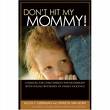As a result of the reading this week, I learned a new term. I was familiar with the practice of "Sati" or "Self-Immolation," especially for widows burned alive on the funeral pyre of their husbands, and also its use in protests. But I didn't know the words to describe it, so I looked at wikipedia under "self-immolation" and "sati."
The Term "Sati" means a lot of different things actually, and comes from Hindu mythology, relating to a story of a goddess bearing the name "Sita", who went through a "trial by fire" in order to be reaccepted by her husband (who was alive--not dead!). The word "Sati" now also refers to a "chaste" or "good" woman, as well as a widow who has gone through self-immolation.
The wikipedia posting about self-immolation did not mention the practice being used by widows (or widows being forced to undergo this death by burning), and the listing on "Sati" also barely mentioned the definition applying to widows' suicides.
Finally there was a listing called "Sati (Practice)" which provided some details about the practice in Hindu cultures, but pretty definitively implied that it was a problem of the past, which is "rare" nowadays. They mentioned literally a handful of cases in the last 50 years, which I found to be such a disservice to the MANY women who die each year through coerced Sati.
We know from the readings and the presentation offered today that this practice, though illegal, is still practiced commonly in different parts of India. The statistics that were cited were from the 1800s, and it was not clear whether no one had bothered to collect statistics about how many women experience this type of death in modern times or whether no one had bothered to post it to wikipedia yet... One related statistic I found was that the UN reports that 5,000 women per year are killed in India because the husband or husband's family feels that the woman's dowry is insufficient. Often these "dowry deaths" are staged as burnings, especially "accidental" burnings in which the stove explodes, or the woman is lit on fire and pushed out a window.
I found some videos on youtube that I wanted to share, but I want to preface them by saying that they may be quite painful and difficult to watch. The first was made by the "Revolutionary Association of Women of Afghanistan" (RAWA), and it shows the impact of self-immolation on women who attempted suicide to "escape miseries."
Self-immolation may be used in formal protest, and some of the most famous protests utilizing these methods were enacted by Buddhist monks who were against the Vietnam war. This footage may be upsetting to watch, as the monks sit quietly and peacefully while they burn to death.
We talked today about the search for meaning in life (and death) and wondered about what individual people decide is "worth dying for" or "worth killing for." This footage brings up more questions than answers for me... how about you?
Topics List: Spring 2008
- VIOLENCE, TRAUMA AND SOCIAL WELFARE COLLOQUIUM
- Week 1: Introduction and Self-Care
- Week 2: Historical and Theoretical Perspectives
- Week 3: Biopsychosocial Impact of Trauma
- Week 4: Violence Against Women
- Week 5: Religion, Race, Ethnicity, and Violence
- Week 6: Etiologies of Violence; Perpetrators of Intimate Partner Violence
- Week 7: Child Sexual Abuse; Suicide and Self-Harm
- Week 8: War, Crimes Against Humanity, and Genocide
- Week 9: Poverty and Violence in Oakland & Bayview-Hunter's Point
- Week 10: Rape as a Weapon of War; Violence Against LGBT people
- Week 11: Interventions for Trauma (with Greg Merrill)
- Week 12: Child-Parent Psychotherapy
- Week 13: Truth & Reconciliation in the Aftermath of Violence (with David Androff)
- Week 14: Violence, Trauma and Social Work (student presentations)
Tuesday, February 19, 2008
Self-Immolation (suicide by burning alive)
Subscribe to:
Post Comments (Atom)
Who Are You? (check all that apply)
How did you find this blog?
Links to Browse & Buy Books
Trauma and Recovery

by Judith Lewis Herman
Don't Hit My Mommy

by Alicia Lieberman and Patricia Van Horn
Violence: A National Epidemic

by James Gilligan
Ayaan Hirsi Ali
- Submission Part 1 (a short film in which the words of the Koran are written on women's bodies as they speak their stories of violence and trauma)
- "Infidel" (her autobiography of growing up a refugee and becoming a member of the Dutch Parliament)
- "The Caged Virgin" (her essays about women and Islam)
- Ayaan's Personal Web Page
- Wikipedia (good summary of her life, philosophy, and work)
Submission
Ayaan Hirsi Ali

from the cover of "Infidel"






No comments:
Post a Comment